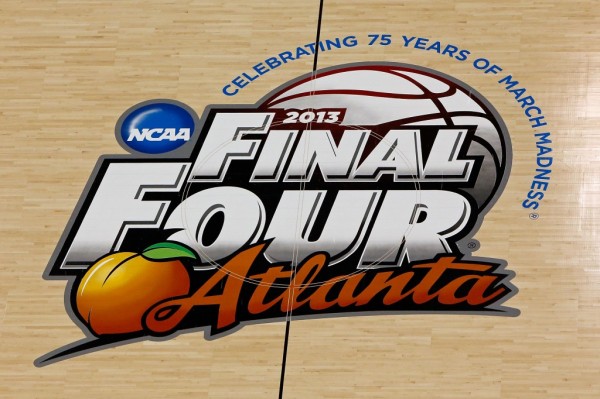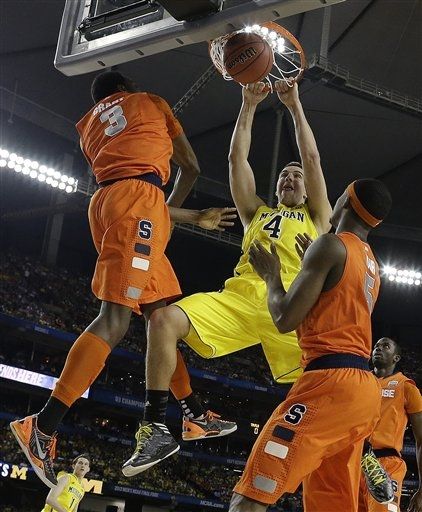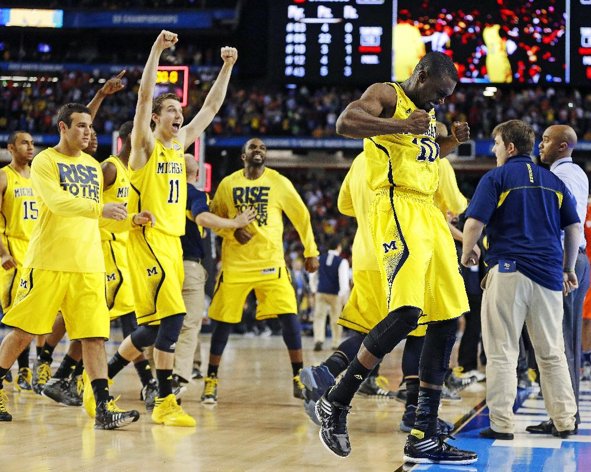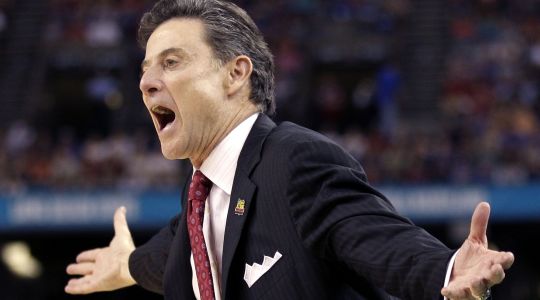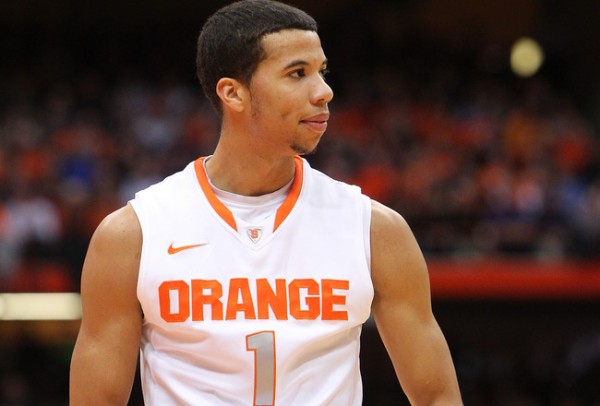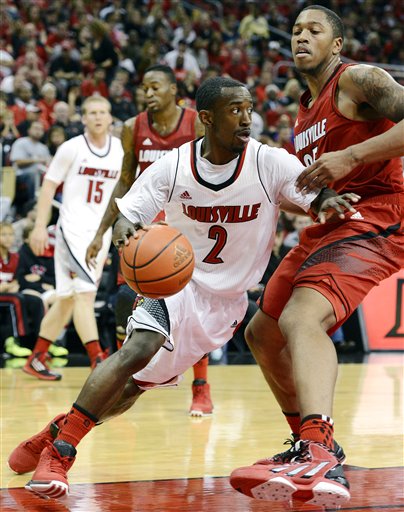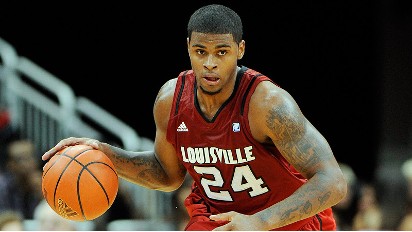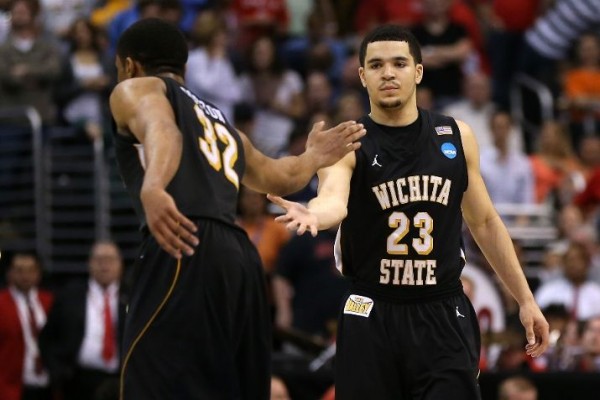National Championship Game Analysis
Posted by Brian Otskey on April 8th, 2013Brian Otskey is an RTC Contributor and filed this preview of tonight’s game for all the marbles. Follow him on Twitter @botskey.
The National Championship Game: #1 Louisville (34-5) vs. #4 Michigan (31-7) – 9:23 PM ET on CBS. Jim Nantz, Clark Kellogg and Steve Kerr will have the call live from the Georgia Dome in Atlanta, Georgia.
After five months and 5,744 regular season, conference tournament and NCAA tournament games, the college basketball season comes down to one game on one night in Atlanta. Top overall seed Louisville enters the game as the favorite but by no means will this be a walk in the park. The Cardinals are in search of their third national championship this evening and their first since 1986. On the other side, Michigan is looking for its second national title, having won it all once before in 1989. It is somewhat hard to believe given the strength of the two leagues over the years but this is the first national championship game between Big East and Big Ten schools since the aforementioned Wolverines held off Seton Hall in overtime to win it all at the Kingdome in Seattle 24 years ago.
Louisville has now won 15 straight games after surviving a major scare from Wichita State on Saturday night. In fact, the Cardinals have won 18 of their past 19 games since a three game losing streak in January and the one loss was in five overtimes to Notre Dame. This game features the nation’s best defense (Louisville) and the most efficient offensive team in the land (Michigan) going head to head in what should be a terrific basketball game. For the Cardinals to win, they must attack the rim and use their defense to fuel their offense. Rick Pitino’s team is no slouch offensively (#5 in efficiency), but its offense is largely predicated off its ability to create live ball turnovers and score in transition. Louisville is lethal in transition but not great in the half court unless it attacks the basket, either with its guards off the bounce or great athletes like Montrezl Harrell and Chane Behanan working the baseline and the low block. In Saturday’s national semifinal, Wichita State forced Louisville into way too many jump shots for Pitino’s liking and it almost cost the Cardinals dearly. The Shockers were rattled by a series of turnovers late in the second half and lost the game because of it. Louisville’s ball pressure is the best in the country and it starts with Peyton Siva and Russ Smith. Both play the passing lanes so well but Smith in particular is among the nation’s best defenders. After it scores, Louisville’s full court pressure takes full effect. The big question in this game will be whether the Cardinals (#2 in forcing turnovers) can turn over the Wolverines (#1 in ball protection) enough to fuel their offense. When Michigan played VCU in the round of 32, the Wolverines obliterated Shaka Smart’s “havoc.” There is, however, one major difference between VCU and Louisville. The Rams are not a great defensive team in the half court while Louisville plays the best half court defense of any team in America. Siva has to slow down Trey Burke, who picked up just about every imaginable award this week. Michigan showed just how good of a team it is by winning its semifinal game against Syracuse without its star sophomore point guard being a major factor. While it’s fair to say Michigan has never seen a defense like this all season long, Louisville hasn’t seen an offense with as many weapons as this one. When Michigan has the ball, the battle between the best offense and the best defense could be one of epic proportions.






























